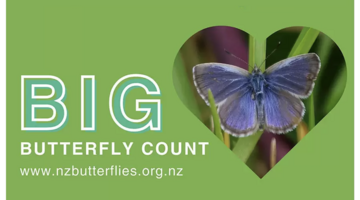

Adventure is engaging in an unusual or daring experience. Discovery is the act of finding or learning something for the first time. Adventure and discovery are both pretty exciting prospects – so ...
READ MORE

Names are important. They identify who we are and where we come from. But sometimes, names don’t tell the whole story. For example, the Oxford Dictionary defines ‘moth’ as an insect with two ...
READ MORE

Moths are members of the order Lepidoptera, but these mostly nocturnal creatures are often in the shadow of the brighter, day-flying butterflies. New Zealand has fewer than 20 butterfly species ...
READ MORE

In this activity, students place small stickers (tags) onto caught or newly emerged monarch butterflies and release them into the environment. The tag number, information about the butterfly and ...
READ MORE

In this activity, students use white butterfly eggs, larvae and pupae to examine the white butterfly life cycle and to compare it with that of a monarch butterfly. By the end of this activity ...
READ MORE

Pollinators are insects that visit flowers to drink nectar or feed on pollen. During this process, they get covered in pollen grains and then transport the pollen from one plant to another ...
READ MORE

This New Zealand-based citizen science project collects data about butterflies in our gardens, schools, parks and farms – any location in the country or on the outer islands. This annual event – ...
READ MORE

iNaturalist logs hundreds of thousands of photos of flora, fauna and fungi. There are even sound recordings too. Each is described and geo located. iNaturalist is used by citizens and scientists ...
READ MORE

This project involves the pesky Pieris rapae (better known as the white butterfly or white cabbage butterfly), which is very common in Aotearoa New Zealand. It is believed to have originated in ...
READ MORE

This unit plan is designed for students in years 1–5. When someone mentions the word ‘butterfly’, what image pops into your head? Chances are it’s the monarch or the white butterfly, as these are ...
READ MORE

In this online PD session recorded on 30 July 2015, primary school teacher Angela Schipper describes how she used the Butterflies resources from the Science Learning Hub in the classroom. In ...
READ MORE

Investigate insects found in New Zealand to answer questions about life cycles, classification, conservation and biosecurity. Start by watching our webinar All about insects. Below are links to a ...
READ MORE
Ka kōrero a Maia rāua ko Tūmai, nō Te Kura Kaupapa Māori o Ōtepoti mō te take i pai ai kā pepe tuna ki a rāua. English translation Maia and Tūmai from Te Kura Kaupapa Māori o Ōtepoti tell us why ...
READ MORE
The Ahi Pepe MothNet team have given Māori names to some of the moths they’ve observed. Watch as Te Kura Kaupapa Māori o Ōtepoti students name a moth and as Dr Robert Hoare explains why names ...
READ MORE
Dr Robert Hoare from Manaaki Whenua – Landcare Research explains why it’s challenging to identify moths. He also notes that observation leads to appreciation and, hopefully, conservation. Robert ...
READ MORE

Exploring moths as ecological indicators of health and connectedness in our natural world. Select here for further information, transcript and copyright.
READ MORE

Most of New Zealand's butterflies belong to the Nymphalidae and Lycaenidae families. Use the Slideshow menu for further options, including view full screen, and go here for the download option.
READ MORE

Use this Aotearoa New Zealand native butterflies slideshow to learn more about native butterfly habits and behaviour, then go butterfly hunting! Use the Slideshow menu for further options ...
READ MORE